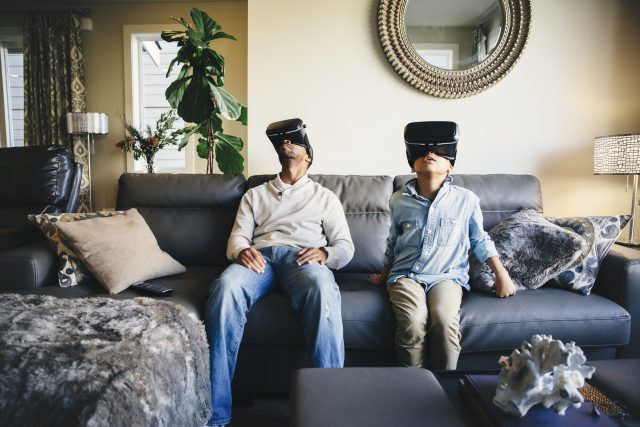In recent years, virtual reality has emerged as one of the most exciting and transformative technologies, revolutionizing the way we interact with digital content and altering the very fabric of various industries. From gaming and entertainment to education and healthcare, VR has penetrated multiple domains and is set to redefine the human experience.
The Rise of VR
The roots of VR can be traced back to the 1960s when the concept of immersive virtual experiences was first conceptualized. However, it wasn’t until the last decade that VR truly gained momentum and became more accessible to the masses. Technological advancements, such as powerful graphics processing units (GPUs), motion tracking sensors and high-resolution displays, significantly contributed to the rise of VR.
Gaming played a pivotal role in popularizing VR, as well, with companies like Oculus (now renamed Meta Quest) and HTC introducing consumer-friendly headsets that offered an unparalleled level of immersion. As the technology improved, so did its applications. VR has now expanded its reach to various fields, from architecture and engineering to therapy and training simulations.
How VR Works
At its core, VR is a simulated experience that can be similar to or completely different from the real world. To create a convincing virtual environment, VR relies on a combination of hardware and software components:
- Head-Mounted Display: The primary hardware component is the head-mounted-display, which is worn on the user’s head and contains a pair of displays, one for each eye. These displays generate stereoscopic images, creating the illusion of depth and three-dimensional space.
- Motion Tracking: VR systems employ various sensors, such as accelerometers, gyroscopes and infrared cameras, to track the user’s movements and adjust the virtual environment accordingly. This tracking ensures that the user’s perspective changes in real-time as they move their head and body.
- Input Devices: Interaction within VR is facilitated through input devices, such as handheld controllers or even gloves with haptic feedback that respond with vibrations or textures related to the content being watched. These devices let users manipulate virtual objects and navigate through the digital world.
- Graphics Processing: VR demands high-quality graphics to maintain a seamless and realistic experience. Advanced GPUs render complex scenes and environments at high frame rates, minimizing motion sickness and ensuring smooth gameplay.
- Audio Technology: Immersive 3D audio is crucial for a convincing VR experience. Sound cues help users identify their surroundings and create a sense of presence within the virtual world.
The Future of VR
As VR continues to evolve, its future appears incredibly promising. These are some key developments and expectations for the technology:
Improved hardware: The ongoing development of more powerful and lightweight hardware will make VR headsets more comfortable and accessible to a broader audience. Wireless and standalone VR devices will reduce the need for external computing power and cables.
Social interaction: VR is on the verge of revolutionizing social interactions. Collaborative virtual spaces will allow users from around the world to meet, work and socialize in shared digital environments, enhancing remote communication.
Medical applications: VR is already being utilized in therapy, treating phobias, PTSD and anxiety disorders (including driving anxiety). As the technology becomes more sophisticated, it could be harnessed for pain management, physical rehabilitation and even surgical training.
Education and training: VR has immense potential in education and professional training. Students can explore historical events, visit distant places and conduct complex experiments in a safe and immersive setting. Industries like aviation and engineering can use VR for hands-on simulations and skill development.
Entertainment and media: The entertainment industry will continue to embrace VR, offering more interactive and immersive experiences. VR movies, concerts and sporting events could become regular forms of entertainment.
Augmented Reality Integration: The convergence of VR and AR technologies will create a mixed reality (MR) landscape, allowing users to seamlessly transition between virtual and real-world elements. This integration will open up new possibilities for both consumer and industrial applications.
The rise of virtual reality has been marked by groundbreaking advancements in technology and a diversification of its applications. As the technology continues to mature, we can expect VR to redefine how we interact with digital content and how we perceive reality itself. With ongoing innovation and investment, the future of VR holds immense promise, transforming various aspects of our lives and shaping the way we experience the world around us.
Read more tech stories like this.
What excites you about the future of VR? Share your thoughts in the comments below.

















